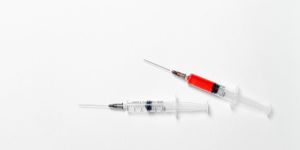Wireless Patch Monitors Heart Activity
A team of researchers at Northwestern University have designed a new medical device that could allow doctors to monitor the heart activity of their patients, especially following a serious cardiac event, such as a heart attack. The new device is described in a recent article published in Science Advances.
Cardiac conditions and heart disease are a prevalent health condition in the United States. These include conditions like coronary artery disease, which can lead to life threatening health conditions, such as heart attacks. Heart disease, in particular, is one of the leading causes of preventable death in the United States, making it an incredibly important area of study.
Heart attacks, in particular, can lead to a range of health complications after the initial heart attack. These complications can lead to death, and being able to monitor a patient’s health and wellbeing following these life-threatening events can make the difference between life and death.
In response to this need for better monitoring of patient health after a cardiac event, Northwestern University researchers have designed a new tool that could enable this kind of monitoring in a minimally-invasive way. Specifically, the device is a thin, clear patch that can be applied directly to the heart during a routine procedure without much difficulty. Once there, the patch is able to monitor a patient’s heart activity, including the electrical activity of the heart. The patch is also designed to be biodegradable, so there is no need for a second procedure to remove it. And the clear nature of the patch allows for routine imaging without the patch cause discrepancies in the imaging. Once applied, the device can also help detect for signs of complications following a cardiac event, such as atrial fibrillation.
Researchers hope their new device can help close an existing gap in available technologies for monitoring the heart; in fact, the kind of technologies available for monitoring the heart post-cardiac event aren’t quite advanced enough to do what researchers want and need.
Sources: Medgadget; Science Advances








